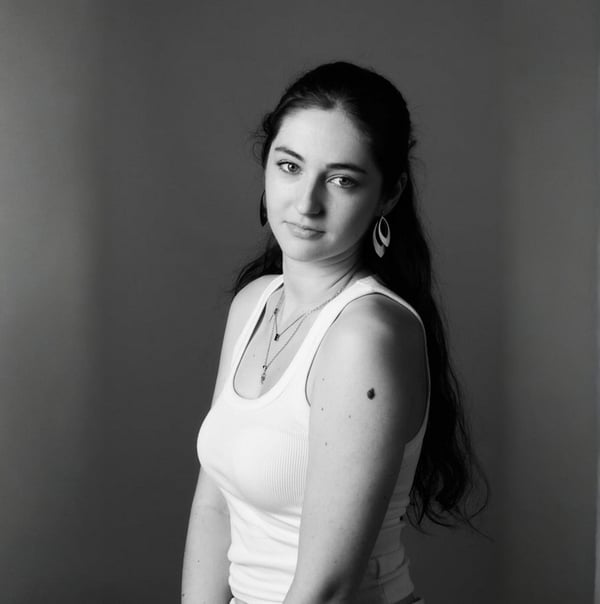How AI Is Shaping the Future of Kids’ Fashion
Table of Contents
- Digital Fashion for Kids: The New Dress-Up Game
- Virtual Try-Ons and Augmented Reality
- Personalized Recommendations for Children
- AI-Generated Design: Creative, Fast and Inclusive
- Smart Clothing and Wearable Tech for Kids
- Predicting Children’s Clothing Trends with AI
- Inclusive Marketing with AI Image Generation
- Eco-Conscious Parents, Smarter Shopping
- Real-Life Use Case: How Modelia Enhances AI Fashion for Kids
- FAQ AI Fashion for Kids
Children’s fashion is no longer just about cute prints and seasonal trends. It’s becoming a hub of innovation where artificial intelligence (AI) is influencing everything, from design and manufacturing to how kids and parents interact with fashion brands. While the intersection of AI and adult fashion has been widely explored, AI fashion for kids is a growing niche with major implications for creativity, customization, safety and sustainability.
This shift is powered by technologies that make fashion smarter, more accessible, and more engaging, especially for digital-native kids. Here’s how AI is changing the game.
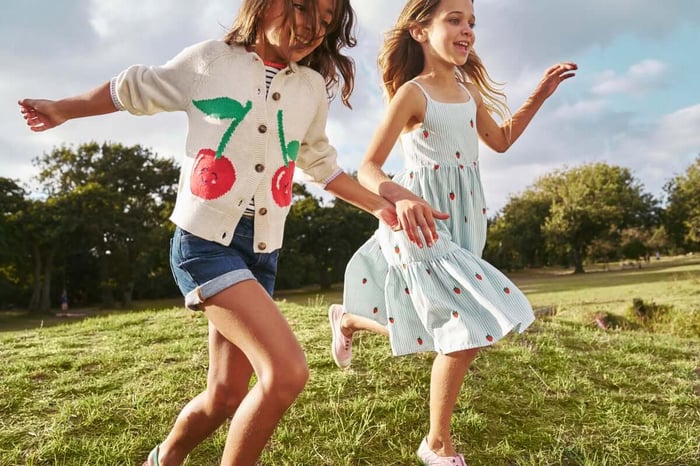
Digital Fashion for Kids: The New Dress-Up Game
Digital fashion for kids goes far beyond gaming skins or cartoon avatars. It’s about using virtual garments, designed by AI and displayed in 3D environments, for trying on clothes, building personal style and even sharing on social media. For kids, this becomes a digital version of playing dress-up, but with limitless possibilities.
Instead of physically producing garments that may or may not resonate with buyers, brands can use AI to design clothing that exists only in a virtual format. Parents and children can preview styles on digital avatars, making it easier to choose pieces that fit both size and personality before buying anything.
Modelia, for example, offers technology that can take a simple flat-lay image of a garment and transform it into a photorealistic visual of a model wearing that outfit. While their tools are used widely in adult fashion, they hold huge potential in children’s wear. A digital rendering of a child wearing the garment, without needing a photoshoot, helps brands market faster and lets customers visualize real-life fit and style more accurately.
Virtual Try-Ons and Augmented Reality
Trying on clothes in a store is often a inconvenience for children and for their parents. That’s where virtual try-on tech, powered by AI and augmented reality (AR), changes everything. Kids can “try on” clothes using an app or online tool that maps garments to their avatar or real-time image.
This has two major benefits:
- It turns shopping into a fun, interactive experience.
- It dramatically reduces return rates due to sizing or styling issues.
With Modelia’s model-to-model AI engine, it's possible to simulate how a piece of clothing would look on kids of various shapes, ages and skin tones, without ever stepping into a fitting room.
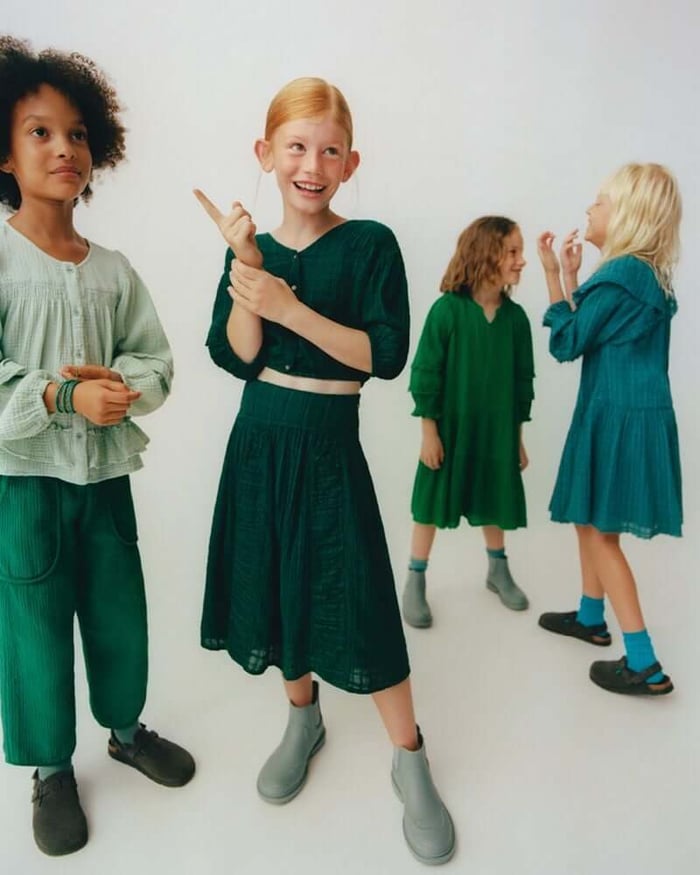
Personalized Recommendations for Children
Kids have preferences just like adults. AI helps fashion platforms track browsing behavior, likes and purchase history to suggest items tailored to each child’s unique taste. From favorite colors and characters to comfort and fabric types, these platforms build profiles and feed recommendations that evolve over time.
In a family with multiple children, this type of kids fashion technology makes shopping faster and more efficient. It also introduces a level of personalization that encourages self-expression, empowering children to discover their own sense of style.
AI-Generated Design: Creative, Fast and Inclusive
Traditional design processes involve months of sketching, sampling, testing and manufacturing. With AI design tools, entire collections can be brainstormed, iterated, and digitally tested in weeks or even days.
Some platforms allow designers to input mood boards, textures, or even just keywords to generate dozens of garment ideas in minutes. This speeds up time-to-market while also expanding creative possibilities.
Companies like Modelia allow brands to visualize those designs on models of different sizes and demographics. This helps brands supply the wide diversity of kids today, from toddlers to teens, ensuring inclusive representation in campaigns and catalogs.
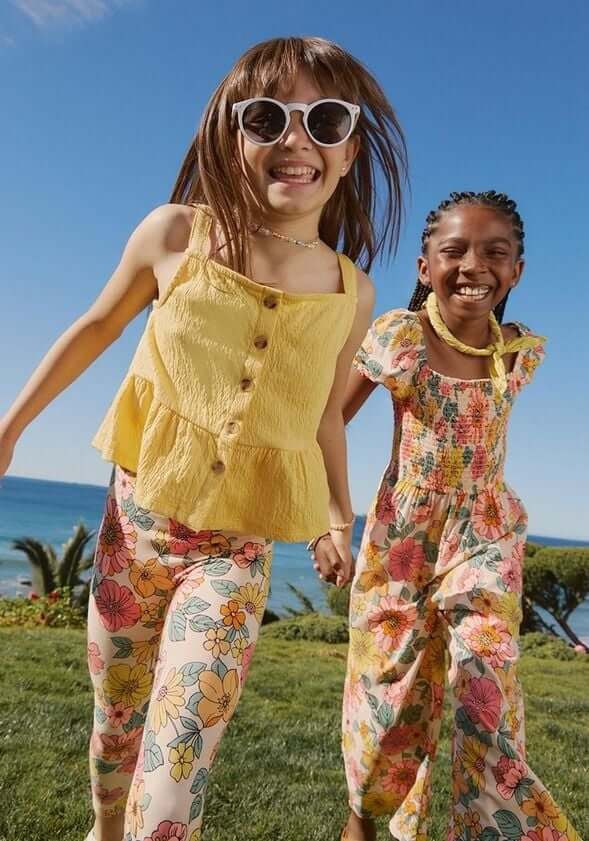
Smart Clothing and Wearable Tech for Kids
The integration of sensors and responsive materials into children's clothing opens new doors for function and safety. These smart garments can monitor vital signs, temperature, UV exposure, or hydration, making them ideal for sportswear or outdoor play.
AI interprets the data collected by these garments and provides feedback to both kids and parents. For instance, a jacket could notify a parent via an app if a child’s body temperature becomes too high. While still a developing sector, smart fabrics are expected to play a major role in the future of AI fashion for kids.
Predicting Children’s Clothing Trends with AI
What do kids want to wear next season? What characters or themes are resonating right now? Instead of relying on outdated guesswork, brands use AI to analyze real-time data from social media, shopping trends, and digital engagement.
These insights help brands design and market collections that are aligned with what kids (and their parents) are actually interested in, be it sustainability, fantasy themes, sporty aesthetics, or cultural references. This also prevents overproduction and reduces the risk of unsold inventory, a huge win for sustainability.
Inclusive Marketing with AI Image Generation
Diversity in kids’ fashion has often been limited by the cost of photoshoots and model availability. AI-powered platforms like Modelia remove those limitations. Their “Model to Model” feature lets brands upload one product image and instantly generate variations with models of different ethnicities, sizes and styles.
This allows brands to create marketing materials that better reflect the real-world diversity of their audience. It’s more than a convenience, it's a shift toward a more inclusive and representative fashion industry.
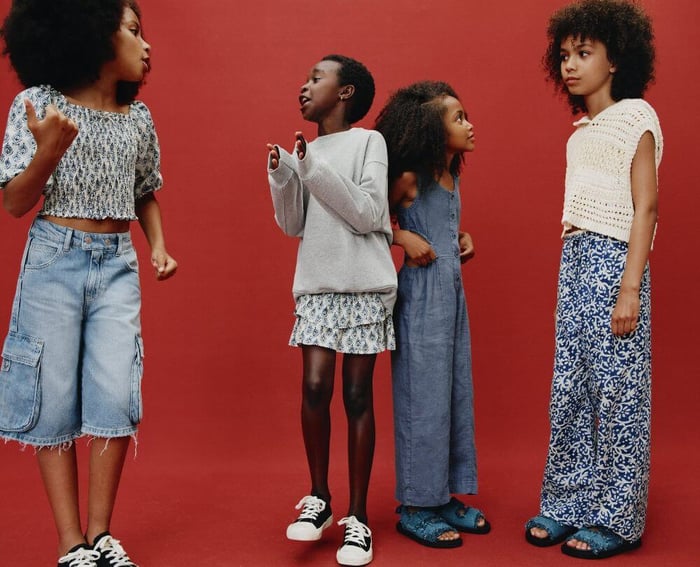
Eco-Conscious Parents, Smarter Shopping
AI-driven previews and digital prototyping allow parents to make better, faster and more sustainable buying decisions. No more overordering sizes “just in case”. No more returns due to poor fit or misjudged styles.
With tools like Modelia, parents can see clothes on a digital model resembling their child before purchasing. That reduces both hassle and environmental waste. Considering how quickly children grow, this kind of accuracy is a game-changer for families who care about eco-responsibility.
Real-Life Use Case: How Modelia Enhances AI Fashion for Kids
Let’s take a closer look at Modelia, a fashion AI platform that offers advanced tools to support both design and marketing:
Flat-to-Model Conversion: Upload flat-lay or mannequin images of children’s clothing and turn them into realistic model shots, ideal for speeding up campaign launches.
Model to Model Swapping: Change the model in any photo while preserving the garment’s look and fit. Perfect for showcasing inclusivity across ages and sizes.
Color Variants and AI Editing: Swap colors, adjust backgrounds, and fine-tune lighting, all via AI, without reshoots or editing software.
Sketch-to-Image and Video Tools: Create visuals from design sketches and generate animated clips for social content or e-commerce.
Even if your fashion brand doesn’t cater exclusively to kids, these tools are highly adaptable for children's fashion lines. You save time, money, and creative energy, while connecting better with your market.
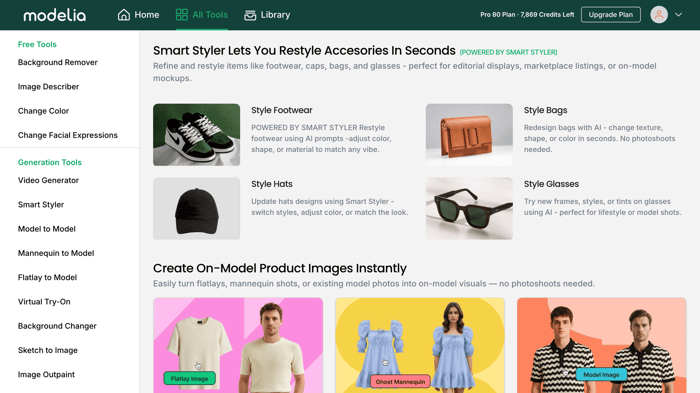
Try Modelia and discover its capabilities for yourself
FAQ AI Fashion for Kids
1. What is AI fashion for kids?
AI fashion for kids refers to the use of artificial intelligence in the design, production, marketing, and personalization of children's clothing. It includes smart fabrics, virtual try-ons, and AI-powered digital design.
2. How is digital fashion for kids used in the real world?
Digital fashion lets kids try on outfits virtually using avatars or AR tools. It’s used in online shopping, gaming, and fashion design to reduce waste and improve customization.
3. What role does Modelia play in AI fashion for kids?
Modelia provides AI tools for image generation, allowing brands to create digital model photos from basic inputs. While not exclusive to kids, their features are ideal for marketing children’s fashion with more diversity, speed, and flexibility.
4. Are smart clothes for kids available now?
Yes, though still emerging. Some brands offer clothing with sensors that monitor temperature, UV exposure, or movement, giving parents helpful health and safety data.
5. How does AI support children’s clothing trends?
AI tracks online behavior, purchases, and content trends to forecast what styles and themes are gaining popularity. Brands can then create designs that truly resonate with young audiences.
6. How does this technology support sustainability?
By reducing overproduction, eliminating unnecessary returns, and enabling virtual sampling, AI helps brands minimize their environmental footprint, especially critical in the fast-changing world of children’s apparel.
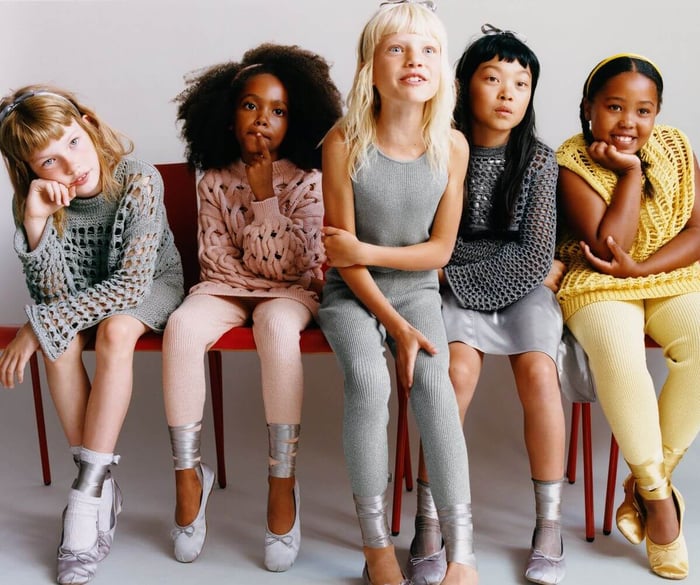
How would you rate this article:
Related Articles
- Shopify vs Magento: Key Differences Explained
- The Ultimate Guide to Upscaling Images Using AI Technology
- Virtual Try-On Revolution: Experience Fashion, Makeup & More
- The Best Tools for Flat Lay Design You Should Be Using
- How AI Image Expansion Tools Can Enhance Your Visuals
- Best Practices for Capturing High-Quality Mannequin Photos
- AI Photo Enlargement: Enhance Image Quality with Artificial Intelligence Technology
- AI Face Swapping: Transform Photos and Videos with Cutting-Edge Technology
- 10 Best AI Fashion Free Model Generators
- Fashion Product Photography: Tips & Tools for Success
